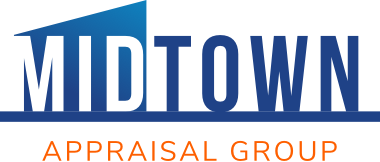It’s best to understand your options before you shop
If you’ve been thinking about buying a home in Canada, you’ve probably also been thinking about mortgages. If you’ve ever spoken to anyone at your bank or other financial institution about mortgages, you probably know there are a sometimes-bewildering number of options. But what do they all mean? Here, we break down your choices, and provide a high-level outline of the differences.
Conventional mortgages
This is probably what most people think of when they think of a mortgage: You make a 20% (or more) down payment on your home, and the lender finances the remainder of the purchase. You’ll make monthly payments and will need home insurance, but you probably won’t need to purchase mortgage default insurance since the equity in your home will likely be considered sufficient.
High-ratio mortgages
A mortgage is considered ‘high ratio’ when you’ve paid a down payment of less than 20% of the purchase price, so the lender is financing as much as 95%. This is riskier for the lender – if your property value decreases, they could end up having a debt larger than the value of the home – so you’ll need mortgage default insurance.
Open mortgages
An open mortgage is one which can be paid off in full at any time without penalty. Open mortgages often have higher mortgage rates, but can make sense if you anticipate a bonus or inheritance that will allow you to pay off the principal at some future date.
Closed mortgages
Closed mortgages tend to have lower rates than open ones, but come with limits around the amount you’re permitted to pay back early. Some closed mortgages may not permit repayment of the entire amount, but do allow lump sum payments or to increase payment amounts.
Variable and fixed-rate mortgages
In a variable-rate mortgage, your mortgage rate may fluctuate during the term of the mortgage, in response to your lender’s ‘prime rate’. The prime rate tends to move as a result of the rates charged by the Bank of Canada (which is why you hear on the news when the Bank of Canada raises or lowers its overnight lending rate). This can be an advantage if you anticipate long-term interest rates to fall, but it’s risky – if the prime rate increases suddenly, you could find yourself with much higher payments. Some financial institutions offer a ‘capped rate’ mortgage, in which the rate is variable to a pre-set cap, which can mitigate risk.
In fixed-rate mortgages, your mortgage rate will stay the same during your mortgage term, which is typically 5 years in Canada (keep in mind that your mortgage term is generally shorter than your amortization term). This is the more popular option for most homeowners because it means your payments are predictable from month to month, which makes it easier to manage the household budget.
Cash back mortgages
These are exactly what they sound like: Mortgages that allow you to receive cash payment up-front on closing. This can be a good option for people who buy a ‘fixer-upper’ and need some cash right away to commence renovations. Interest rates on cash back mortgages are higher than on conventional mortgages, but can make sense if the renovations are going to significantly increase the value of the home in a relatively short period of time.
Second mortgages
A second mortgage is the term used to describe a mortgage added to a property after and in addition to the primary mortgage. Second mortgages generally have higher interest rates than the first or primary mortgage, but aren’t necessarily inherently risky, depending on the equity you’ve accumulated in the home and the market conditions.
Bridge mortgages
Often referred to as ‘bridge financing’, bridge mortgages tend to happen when you’ve bought a home with a closing date that’s different to the closing date on the home you’ve sold, and need to navigate the time in between (generally a few weeks).
Reverse mortgages
Often available only to senior citizens who own their homes, reverse mortgages allow homeowners to convert a portion of their home equity into cash in order to pay for day-to-day living expenses without having to sell their home to do it. This cash advance is registered against title in the same way a conventional mortgage is, but no mortgage payments are required. Instead, the mortgage is repaid when the home is sold, often up on the death of the homeowner. These are legal in Canada, and can be useful in specific cases, but should only be undertaken with a full understanding of the ramifications.
It’s worth taking the time to understand mortgages
Mortgages are one of those subjects that seem pretty simple as a concept, but can become more complex when you start comparing options – it can become overwhelming. However, it really is worth taking the time to understand your options and speak to more than one expert before making decisions – knowing you got the right mortgage for you can make home ownership much easier in the long-term.


